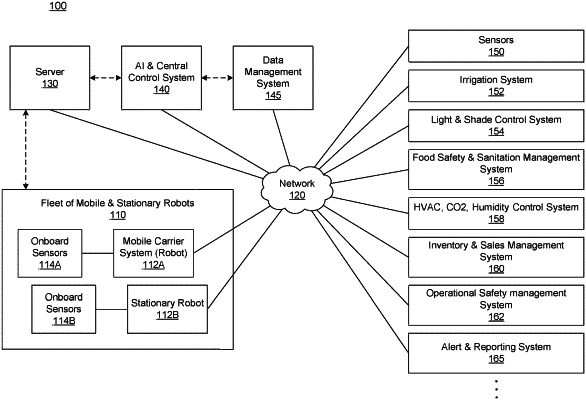| CPC A01G 7/06 (2013.01) [A01G 9/26 (2013.01); G05B 19/4155 (2013.01); G05B 2219/50391 (2013.01)] | 20 Claims |

|
1. A computer-implemented method for administering one or more treatments to a plant in a greenhouse, comprising:
receiving data associated with the plant, wherein the data is at least partially obtained using one or more sensors in the greenhouse;
providing the received data to a trained machine-learning prediction model to obtain:
a set of present health feature values of the plant indicating what the health of the plant should be at a present time and generated by the trained machine-learning prediction model, wherein the set of present health feature values is determined based on historical data collected from the plant at one or more times prior to the present time and not based on observed health of the plant at the present time; and
a set of future health predictions of the plant determined based on real-time data;
wherein the set of present health feature values and the set of future health predictions are with respect to a plurality of output features;
determining whether the plant is unhealthy or lagging a growth trajectory based on:
a first comparison of the set of present health feature values indicating what the health of the plant should be and the observed health of the plant at the present time, and
a second comparison of the set of future health predictions and a future production goal of the plant;
if the plant is unhealthy or lagging the growth trajectory, identifying the one or more treatments for the plant, comprising:
identifying a subset of output features from the plurality of output features corresponding to features for which a threshold deviation was detected in-the first comparison or the second comparison;
providing information related to the subset of output features to a trained machine-learning root cause analysis model to obtain one or more root causes;
identifying one or more mitigation actions based on the one or more root causes; and
providing information related to the one or more mitigation actions to a trained machine-learning work order model to obtain the one or more treatments; and
controlling one or more robots in the greenhouse to administer the one or more treatments to the plant.
|